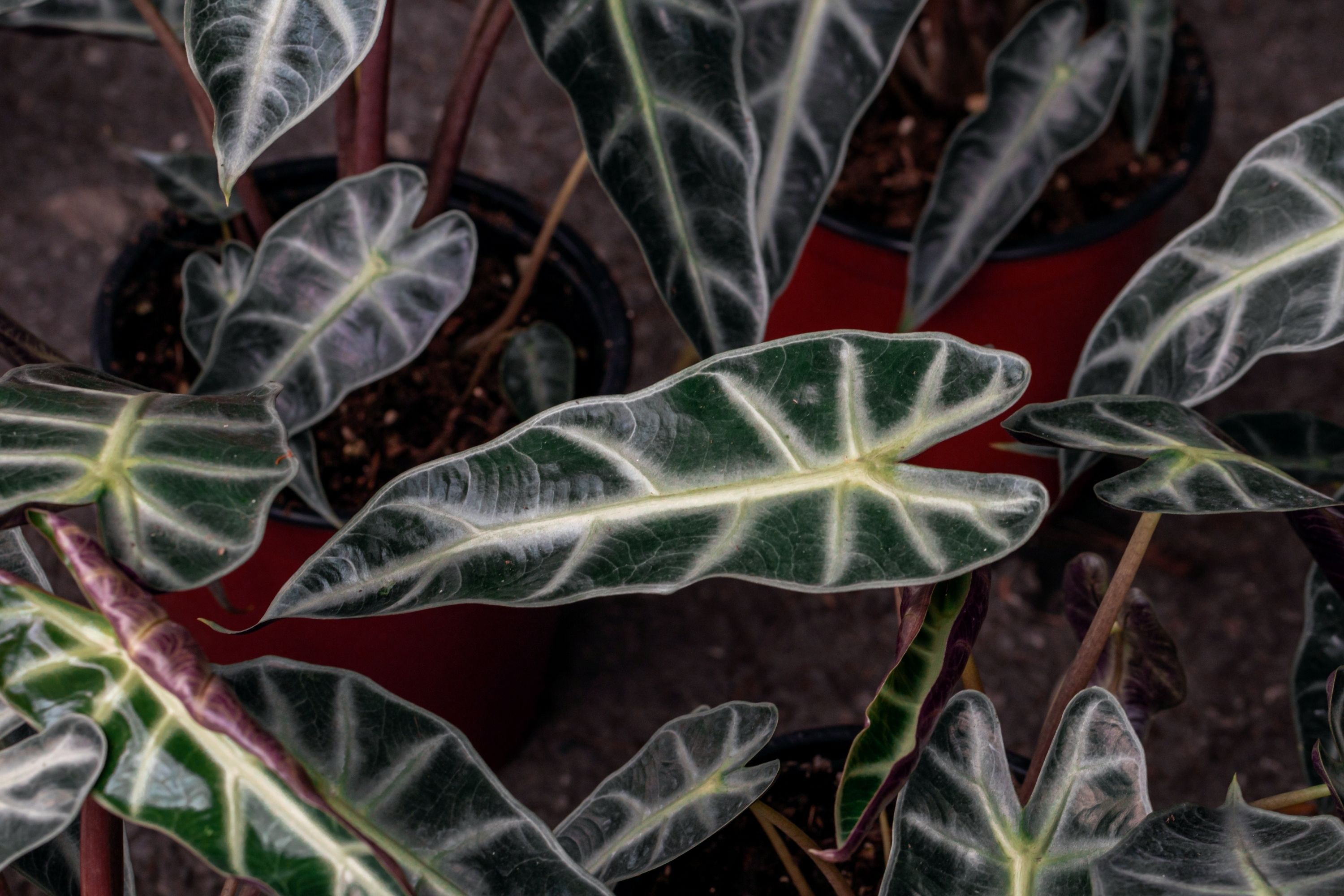The Kris Plant
(Alocasia sanderiana)

Description
Alocasia sanderiana, commonly known as the kris plant or Sander's alocasia, is a plant in the family Araceae. It is endemic to Northern Mindanao in the Philippines, but is commonly grown as an ornamental plant worldwide. It is classified as critically endangered in the wild by the International Union for Conservation of Nature. Alocasia sanderiana is also known as the kris plant because of the resemblance of its leaf edges to the wavy blade of the kalis sword (also known as kris or keris). It is a tropical perennial, with upright leaves, usually growing to a height of 2 ft (60 cm) long. It usually has a single to a few leaves, interspersed with papery cataphylls. The leaves are a deep glossy dark green to blackish-green, often with large white to yellowish veins and margins. It has three to four primary veins, usually arranged opposite each other. The secondary veins emerge from the primary veins at a wide angle. The underside of the leaf is usually (but not always) reddish to purple. The leaves are about 12–16 in (30–40 cm) long and 6–8 in (15–20 cm) wide. They are sagittate (arrow-shaped) ranging from oblong-ovate to broadly lanceolate-ovate. The margins are deeply undulate to sub-pinnatifid. It has creamy-white inflorescences (usually paired) that are about 6 in (15 cm) long, made of a green and white spathe that covers the tiny flowers. Female flowers are grouped at the lower part of the inflorescence, whereas the male flowers are at the top. The rhizome of A. sanderiana is vertically placed and is known as root stock. The fruits, orange-red berries, are not edible. A. sanderiana can be distinguished from similar sympatric Alocasia species in that its leaves are peltate - the petiole is attached to the lower surface of the leaves, and the inner leaf margins of the lobes are fused at a width of 5 mm (0.20 in) or more. It can be distinguished from Alocasia micholitziana (which is also peltate and also endemic to the Philippines), in that the latter has leaves with a velvety (not glossy) texture that do not have cataphylls at the base. A. sanderiana is cultivated as an ornamental plant, for its large dramatic foliage. In nontropical climates, it is used as a house plant. It is also used in making nanomaterials to fight bacteria in vitro.
Taxonomic tree:







